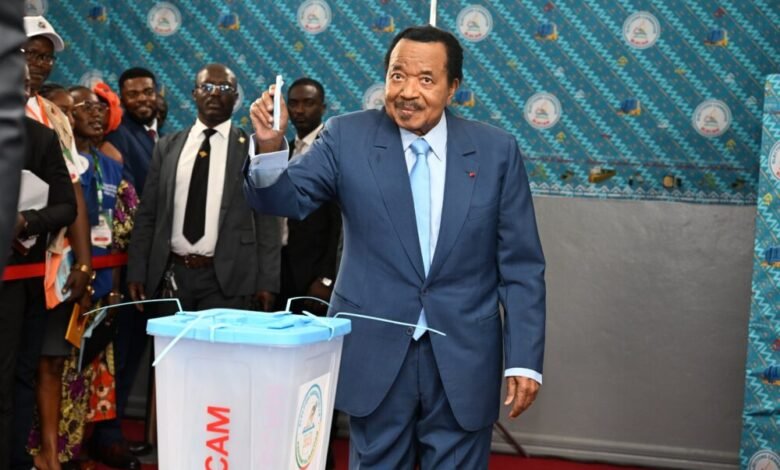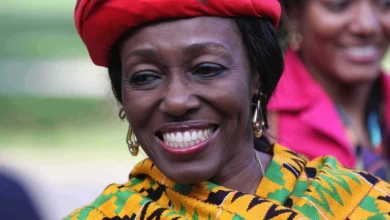
“No Plans to Step Down,” Says 92-Year-Old Paul Biya After Win
Paul Biya, the world’s oldest head of state at 92, has won his eighth term as Cameroon’s president amid fierce opposition protests. The veteran leader captured 53.7% of the votes in the October 2025 election, while opposition leader Issa Tchiroma Bakary received 35.2%.
The victory triggered violent protests that left at least four people dead in Douala, Cameroon’s economic hub. Biya’s grip on power dates back to 1982, and he has ruled longer than most of Cameroon’s 30 million citizens have been alive. The election results reveal a deepening divide between Africa’s aging leaders and its young population. This gap is especially evident in Cameroon, where young people under 35 make up more than 70% of the population. Opposition leaders have called out widespread electoral fraud, and many citizens refuse to accept the results. The country continues to face major challenges under Biya’s leadership, including a violent separatist movement in English-speaking regions that has lasted a decade. Young people struggle with limited opportunities as the unemployment rate among them stands at 40%.
How Paul Biya rose to power and stayed for four decades
Image Source: CNN
Paul Biya’s path to Cameroon’s presidency took an unexpected turn when President Ahmadou Ahidjo stepped down on November 4, 1982. Biya served as prime minister since June 1975 and became the constitutional successor. He took the presidential oath two days later. The shift of power from Ahidjo, a northern Cameroon Muslim, to Biya, a southern Catholic, caught many observers off guard.
Biya’s succession after Ahidjo’s resignation in 1982
The handover seemed friendly at first. Ahidjo stayed on as head of the ruling Cameroon National Union (CNU) party. Biya joined its Central Committee and Political Bureau as vice-president. Tension grew between the two leaders quickly. The situation reached a breaking point by August 1983. Ahidjo had to resign as party chairman and left for France. Biya took charge of the CNU during a special session on September 14, 1983.
Consolidation of power and early reforms
Biya strengthened his position by calling a snap presidential election in January 1984. He ran unopposed and secured 99.98% of the votes. His leadership faced a serious test in April 1984. A military coup attempt failed but led to deaths ranging from 71 to about 1,000 people.
Biya had already launched his “New Deal” vision before these events. His focus was on making politics more democratic, opening up society and the economy, and improving administration. His government adopted IMF and World Bank structural adjustment plans with privatization and economic freedom.
Creation of the CPDM and elimination of rivals
A crucial shift came on March 24, 1985. Biya turned the CNU into the Cameroon People’s Democratic Movement (CPDM) at a congress in Bamenda. This change matched his goal to give “Cameroonians a new way of living together” and create a “new conception of political militancy”.
Public pressure pushed Biya to allow opposition parties in 1990. He managed to keep his hold on power and won the first multiparty presidential race in October 1992 with about 40% of the vote. His control grew stronger as he placed loyal supporters in crucial roles – parliamentary speaker, army chief, and head of state enterprises.
Biya’s long rule stems from his clever “divide and rule” strategy. He also acted as a stabilizing force in a country filled with complex regional, social, and language differences.
Why Biya’s leadership remains controversial
Image Source: NPR
Paul Biya’s long rule in Cameroon has drawn heavy criticism on many fronts. His administration faces mounting challenges that have only grown worse during his decades in power.
Paul Biya corruption allegations and governance style
Paul Biya has ruled Cameroon for over 40 years and created a system that puts all power in his hands. His government ranks among the world’s most corrupt according to Transparency International. Corruption has spread through every part of the government – from street-level police officers to top ministry officials.
Biya runs the country through a network of loyal supporters who get rewarded regardless of their abilities. He gives government jobs mainly to people from his ethnic group and political friends. This practice makes other groups feel left out and angry. The government seems to work harder to keep him in power than to help its citizens.
Absentee presidency and long stays abroad
The 92-year-old president barely stays in the country he rules. This might be his most controversial habit. He spends much of his time at Geneva’s Intercontinental Hotel in Switzerland, where he keeps a permanent suite. Reports show he has lived outside Cameroon for nearly a third of his presidency.
People now call him “the absentee president.” The government often stops working while waiting for his orders from abroad. His luxury lifestyle in Switzerland stands in stark contrast to most Cameroonians who struggle to make ends meet.
Suppression of dissent and media restrictions
Biya’s government keeps a tight grip on political freedoms and silences anyone who speaks against it. Security forces break up opposition meetings. Government critics risk harassment, jail time, or worse. Journalists work under constant threats, and media outlets that criticize the government face shutdown.
The government also uses internet blackouts to control people, especially in English-speaking regions. These shutdowns can last for months during political unrest. They disrupt daily life, education, and business. Such tactics show how Biya’s regime limits civil rights to stay in power and prevent real democracy from taking root.
What the 2025 election reveals about Cameroon’s democracy
Image Source: Al Jazeera
The 2025 election in Cameroon shows how democracy works under President Paul Biya’s long rule.
Constitutional changes removing term limits
Parliament changed everything in 2008 by removing presidential term limits from the constitution. This change erased the two-term limit and let Biya stay in power as long as he wanted. People protested in the streets, but the amendment passed anyway. The 92-year-old leader ended up extending his rule past four decades.
Disqualification of key opposition candidates
The electoral commission blocked several major opposition leaders from running in 2025. Maurice Kamto, who said he won the 2018 election, and three other candidates couldn’t run due to procedural issues. Issa Tchiroma Bakary became the only real challenger and got 35.2% of votes while Biya won with 53.7%.
Allegations of electoral fraud and irregularities
Reports of ballot stuffing flooded in from pro-government areas on election day. Independent watchers caught people voting multiple times, especially in rural places with little oversight. Security forces scared opposition supporters, and the Anglophone regions saw very few voters because separatists told people to stay home.
Role of the Constitutional Council and judiciary
Biya’s handpicked Constitutional Council was quick to confirm the election results despite challenges from opponents. They threw out all complaints about irregularities. This showed how Cameroon’s courts still can’t break free from the government’s control. The whole election process revealed the deep democratic problems that continue under Biya’s leadership.
What lies ahead for Cameroon under Biya’s continued rule

Image Source: International Crisis Group
President Paul Biya has secured his eighth term, but Cameroon faces several critical challenges that will test the 92-year-old leader’s administration.
Anglophone crisis and separatist tensions
The conflict in Cameroon’s English-speaking regions continues without any sign of resolution. Fighting between government forces and separatist fighters has claimed over 6,000 lives and displaced about 765,000 people since 2017. Peace talks remain at a standstill because all but one of these key separatist leaders sit in prison or exile. Schools and businesses in affected areas operate sporadically due to security concerns.
Youth unemployment and economic challenges
Cameroon’s economy doesn’t deal very well with problems that are systemic, despite modest growth. Youth unemployment stands at around 40%, which creates widespread frustration among the country’s mostly young population. The country’s natural resources, including oil and timber, benefit only political elites. Public debt has steadily increased to concerning levels, which limits funding for social programs.
Speculation on succession and Biya’s health
Biya’s rare public appearances have intensified questions about his health. His age has sparked behind-the-scenes maneuvering among potential successors, though no clear heir apparent exists. Political analysts point out that Biya has systematically pushed aside potential rivals throughout his time in power. The lack of a clear succession plan raises concerns about potential risks if a sudden leadership change becomes necessary.
International pressure for democratic reforms
Western nations and organizations increasingly criticize Cameroon’s democratic decline. Several countries have cut back their aid programs, pointing specifically to human rights concerns. Biya’s administration has turned toward China and Russia – partners who usually set fewer governance conditions. In spite of that, international scrutiny of Cameroon’s electoral processes and treatment of political opponents continues to grow.
Paul Biya’s latest electoral win shows how Cameroon’s political landscape remains unchanged rather than transformed. The 92-year-old leader has managed to keep his four-decade grip on power through methods that raise serious questions about democratic practices, even as protests grow and international criticism mounts. The country faces urgent challenges – from the bloody Anglophone separatist conflict to staggering youth unemployment and economic stagnation.
A stark reality exists in Cameroon’s political world – an aging leader rules a mostly young population. The frustration shown in post-election demonstrations goes beyond just opposing election results. It reveals a deeper societal need for change after generations under single-party rule.
Claims of electoral manipulation and constitutional changes that removed term limits have damaged public trust in government institutions. Biya’s administration needs to fix these governance problems to stop Cameroon’s social fabric from unraveling further. Without meaningful reforms, existing tensions could spark wider unrest.
Cameroon’s future stability faces another major threat – no clear succession plan exists. While most democracies have clear power transitions, Biya has removed potential rivals throughout his time in office. This creates uncertainty about what happens after he leaves office.
Cameroon now stands at a crucial turning point. The nation’s future largely depends on whether its leadership can close the growing gap between what the government wants and what citizens need. Though Biya says he has “no plans to step down,” pressure keeps building both at home and abroad. Africa’s longest-serving leader might find it harder to stay his course.






